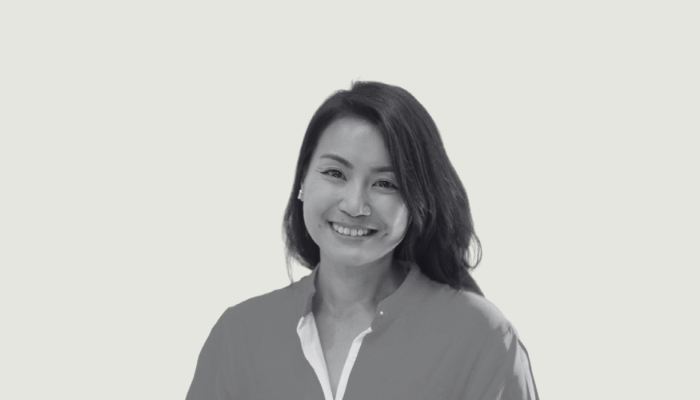I first bonded with Mrs Scovell in an inter-agency workshop. Coming near the beginning of our upstairs/downstairs romance (creative/media agencies sharing a building), it should have endeared me to collaborative sessions more than it did.
Truth is, I’ve had a conflicted relationship with workshops my entire career. In fact, over the years I’ve delighted in gathering a range of studies that showcase the folly of getting groups of people together to “crack a problem”.
Recently an article in Campaign picked up on a meta-study of brainstorm research to decry them in a piece poetically titled, “Brainstorm? Groupwank more like”. Which becomes less click-bait and more nuanced as you read on – but while highlighting the problem well, it doesn’t elucidate the real point and place of workshops – which is anything but ultimately cracking a problem.
It is of course, a convenient truth for creative agencies that great ideas don’t happen in group sessions. This is classic, “don’t look behind the curtain”, stuff – if clients and partners were to see the magic happen right before their eyes they’d wonder what on earth we were charging them so much for. Heck, the might attempt it themselves!
Yes, we all know great ideas come when creatives are closeted away with both feet up on the desk, or (actually) down the pub. Creatives, and many other employees, aren’t necessarily of the personality type that do well in group sessions. And of course, democracy leads to things people agree on, not the most polarising and potentially disruptive ideas. But the mistake here is seeing workshops as being there to provide a solution, rather than being an input into a wider process to get to that solution – eventually.
I started my career in UX-focused agencies, rather than the more traditional creative ones I’ve found myself in the past few years, and it astounds me how poor the latter’s workshop techniques often are. Because, as a breed, they fundamentally dismiss the idea that creativity can come from a group they pay lip-service to the idea – if indeed they feel the pressure to bring stakeholders into the process. In doing so they miss the wealth of techniques that can make these sessions pay-off.
If you ask an (eager) collaborative agency planner the point of “creative workshops” - when they do occur - it is to collaborate on a solution with the client. If you ask another (more cynical) – it is to make clients feel part of the creative process and sell them on an idea from the agency’s back pocket that magically appears at the right time in said workshop.
Somewhere in between these extremes lies the truth, whatever your trademarked process. But we do ourselves and our clients a disservice if we’re not honest about where and how a workshop fits into achieving our ultimate goals.
We live in an age of transparency and collaboration; no matter how we personally feel about that and how it fits our individual style of work. Our customers demand businesses that are open and honest and whose values reflect theirs. If we want to survive in this reality, then the way we grow our businesses must be as transparent and collaborative as our end-product and services. Workshops are a vital part of this.
As Robert A. Heinlein put it, “A committee is the only known form of life with a hundred bellies and no brain.” A timely reminder on the importance of good food in group sessions surely. But also, if unsaid, that the workshop process creates a collective responsibility to make something of it together - rather than simply wishing we were elsewhere.
Like Democracy workshops are not perfect, but they are the best alternative we have for ensuring stakeholders and staff feel involved and empowered. If we set the expectations of attendees and deploy workshops at the right time in an ideation process they will do more good than harm. Just as there are studies that show brainstorms can generate less ideas than individuals alone, there are as many showing what they can best be used for and how to do so.
We’ll be exploring the specifics of collaborative creation in this column over the following months. Follow along here or on our blog 100bellies.com for more tools and anecdotes.
Mrs Scovell says: The workshop Mr Scovell mentions here had, as a warmup activity, a game whereby one passed an apple to the next person using your neck. I believe we bonded out of sheer horror at this activity. I’ve nothing against the notion of “warming up” but making people feel awkward together, as too many activities seem to, is a way of bringing people together that works with limited personality types. An old-fashioned cup of coffee and a muffin, or perhaps a light brainstorm, seems better in most circumstances.
About the authors: Mr and Mrs Scovell are a couple of adland Kiwis living in London. They met across the boardroom table. She in media, he from creative - both planners. The classic inter-agency rivalry. It was not destined to go as well as it did. Before marrying they spent a fruitful few years sparring and collaborating. Along the way they saved some lives, won a few Cannes Lions, moved to the United Kingdom. Love is a battlefield. So is the boardroom. Combine the two? Mr and Mrs Scovell. They write about how we create together in an age of committees, machines and divas. Follow them at 100bellies.com for Theory, techniques and tools. Or contact [email protected] with comments, questions and critiques.



